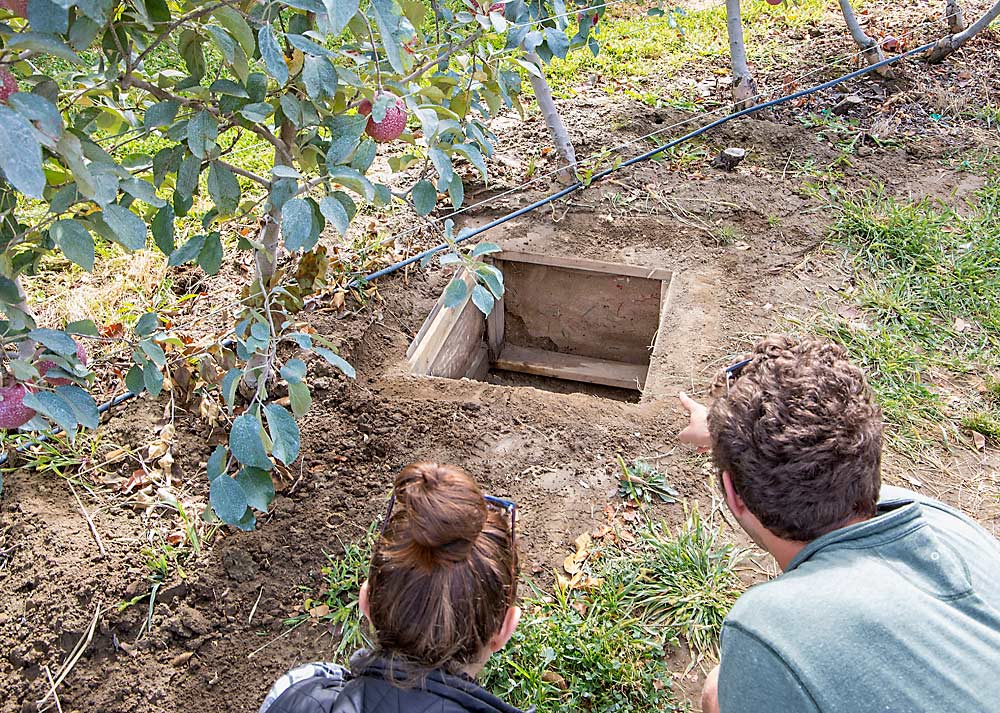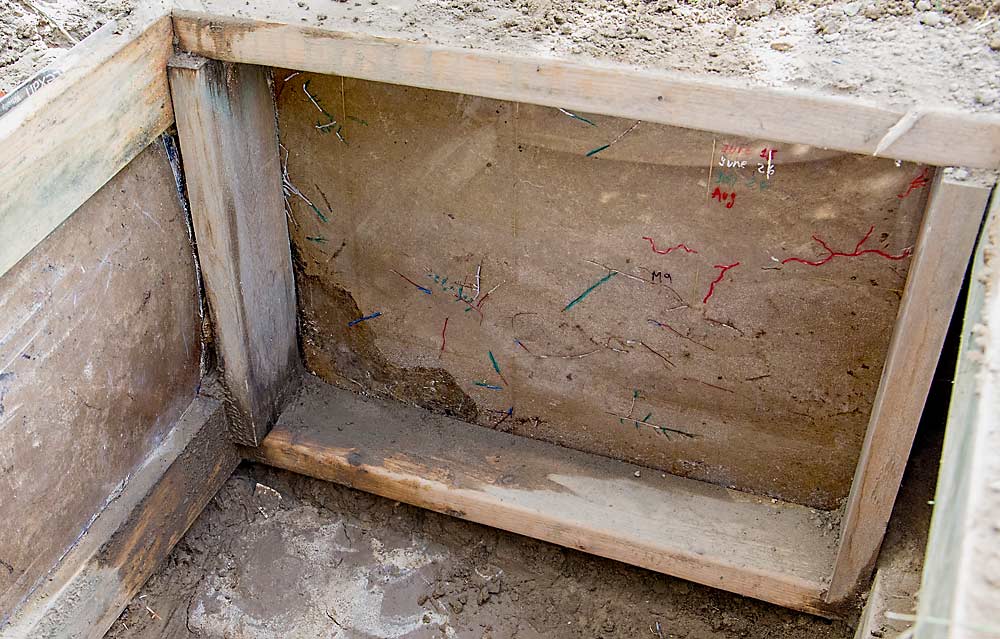
A Washington State University scientist is using soil windows — rhizotrons — to track root growth and connect it to other factors such as soil temperature and weather.
Bernardita Sallato, a WSU tree fruit extension specialist in Prosser, Washington, built the rhizotrons, acrylic panes slid vertically into square soil pits, to give her windows through which to watch root zone development.
With her view of the roots, she aims to learn exactly when roots start growing, visible by white tips, so she knows when to add fertilizers.
“Before that, it makes no sense,” she said. That’s especially true for nitrogen and other nutrients that move quickly through the soil.
Also, she plans to use the windows as a research tool to compare different stages of root growth with other factors, such as soil temperature, changes in the weather and nutrient management. She also wants to compare growth of different rootstocks and track how they tolerate various environmental conditions.
Sallato built four soil windows in 2018, one of them at the Roza research orchard at WSU’s Irrigated Agriculture Research and Extension Center in Prosser, and three others at nearby commercial farms.
She visited them every 15 days, marking root progress by date with different colored markers. She plans to build more this year, working under a Washington State Department of Agriculture grant for soil research.

Sallato got the idea for the soil windows from her previous job in a university soil and nutrients laboratory in her native Chile, where her colleagues published a paper about the structures.
Sallato wants to gather results before she recommends growers try using soil windows on their own farms. But if she does, they are easy to build.
Depending on the depth of the roots, the square holes would be roughly 3 feet wide and 3 feet deep. She used 2-by-4 wood planks to reinforce the panes to prevent the soil from collapsing. She also covers the pits with plywood during the day to prevent sunlight from affecting root growth and stuffs the holes with home insulation in the winter to protect the roots from cold damage.
During a September field day at the Roza research orchard about the WA 38 apple, to be sold under the trade name Cosmic Crisp, Sallato showed growers one of her soil windows, giving them a chance to peer into a vital, but usually hidden, part of an orchard.
They all stooped, pointed and peered into the underground structure before they left. •
—by Ross Courtney






Leave A Comment